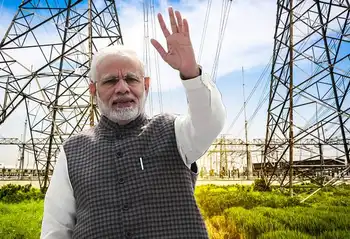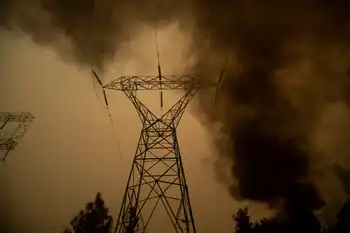Same wires, more power
By Forbes
NFPA 70e Training - Arc Flash
Our customized live online or in‑person group training can be delivered to your staff at your location.

- Live Online
- 6 hours Instructor-led
- Group Training Available
The problems abound: increasing demand for electricity consistently strains the aging network. When planning system upgrades, power companies find themselves burdened by regulatory details and local opposition. Deregulation of the utility industry in the past two decades has fractured investment in transmission lines.
There's help on the way. Start-ups, big utilities and government have unleashed a wave of investment to make the electric grid smarter and more efficient, in spite of (and perhaps because of) underinvestment in transmission. The reason? Potentially enormous profits associated with getting more out of the network that's already in place.
"More generators just congest the system," says Roland Schoettle, founder and chief executive of Optimal Technologies International, a Raleigh, N.C.-based company that is scrambling to get in on the energy efficiency game.
In May the company commercially unveiled technology to measure the performance throughout the power grid, making congestion points more transparent. Optimal says its product could eradicate blackouts. That remains to be seen, though the company received $25 million in funding from Goldman Sachs, and California's grid operator has already successfully tested the system.
Of course, the "grid" is not actually a single web of infrastructure spanning the country, and efficiency gains are localized, often at the utility level. The grid itself is a network of about 10,000 power plants and power lines that runs within three different interconnections - in the West, the East and in Texas. Distribution of electricity is the responsibility of local utilities.
The big coup for start-ups, obviously, lies in turning utilities into customers. A good example: Virginia-based GridPoint, which recently announced partnerships with Duke Energy and Xcel Energy. Duke and GridPoint in March tested a technology that allows utilities to reduce stress on the grid caused by plug-in hybrid electric vehicles. Two months later, the start-up said Xcel will use GridPoint technology as it builds the nation's first "SmartGridCity" in Boulder, Colo.
In fact, the SmartGridCity is a massive energy efficiency project unto itself and a good example of how major utilities are getting in on the action. Think of it as a "Tomorrowland" for electricity, a prototype community that allows customers to determine when and how they'll use energy. Scheduled to be completed in 2009, it will include advanced meters, a network upgrade and the ability for local power sources to link up to the grid.
Known as "distributed generation," this localized power production is a key factor - and possibly the Achilles' heel - in the evolution of the smart grid. The idea behind distributed generation is to produce electricity near homes and businesses (usually from natural gas, small wind turbines or solar energy systems), thus alleviating the strain on power lines. In some cases, distributed power connections can sell energy back into the grid.
One quickly growing component of the distributed generation world is solar energy. Although it now provides less than 0.1% of the electricity generated in the U.S., solar power could account for 10% of the nation's power needs by 2025, according to a new study by the research firm Clean Edge. Already, companies such as Google and eBay are installing solar panels on their offices to reduce their reliance on the grid for power.
But here's the rub: Not all distributed generation is created equally. Local power sources frequently don't have the same voltage standards as electricity that comes from a centralized source, such as a coal-fired power plant. If a distributed generator goes out of service, it could prove a weak spot in the grid if it has no backup. The group that monitors grid reliability for federal regulators, the North American Electric Reliability Corp., doesn't have jurisdiction over local power lines. That's up to the utilities.
"If distributed generation is not integrated properly, it could have negative impacts," says Steve Hauser, president of the GridWise Alliance, a group pushing for a smarter grid, and a vice president at GridPoint.
So far, there hasn't been a major problem. And it looks as if Uncle Sam is keen to help the smart grid develop so catastrophe doesn't occur. The energy law passed by Congress last December calls for the U.S. Department of Energy to create a program to help cover the cost of smart-grid investments. It also requires the agency to report to lawmakers annually on the grid's evolution.
But some of the most meaningful action will probably come at the local level. Earlier this year, the Federal Energy Regulatory Commission announced that it's starting a "collaborative dialogue" with state regulators to begin the transition to a smarter grid.











